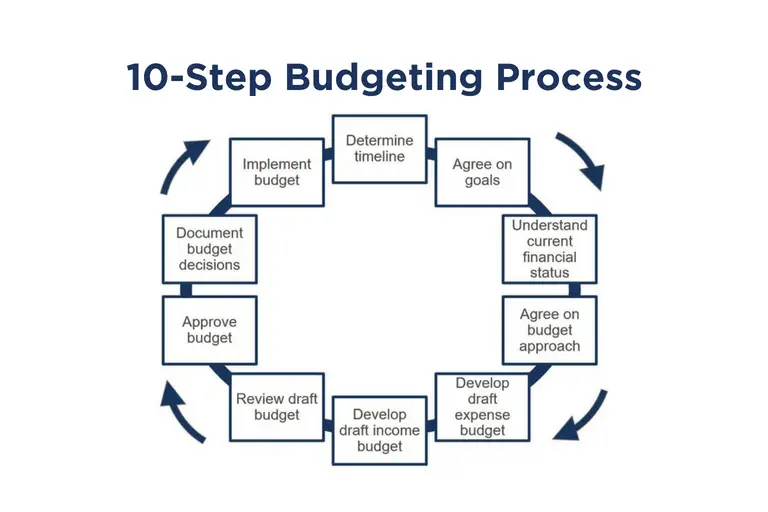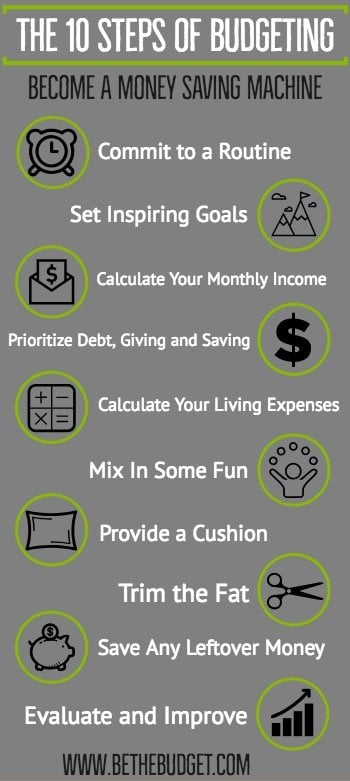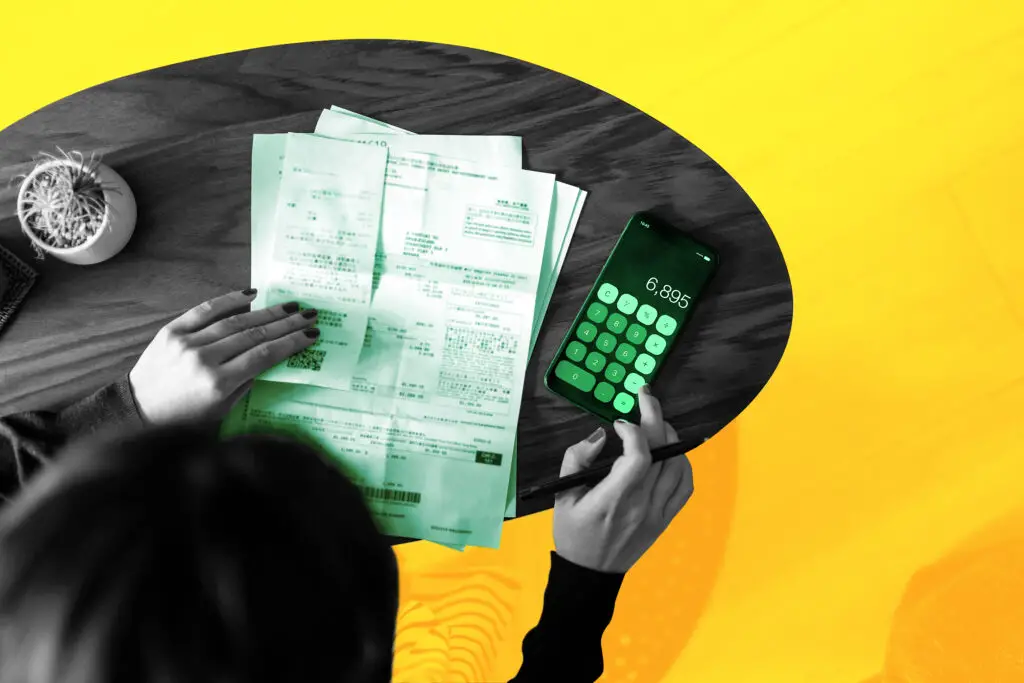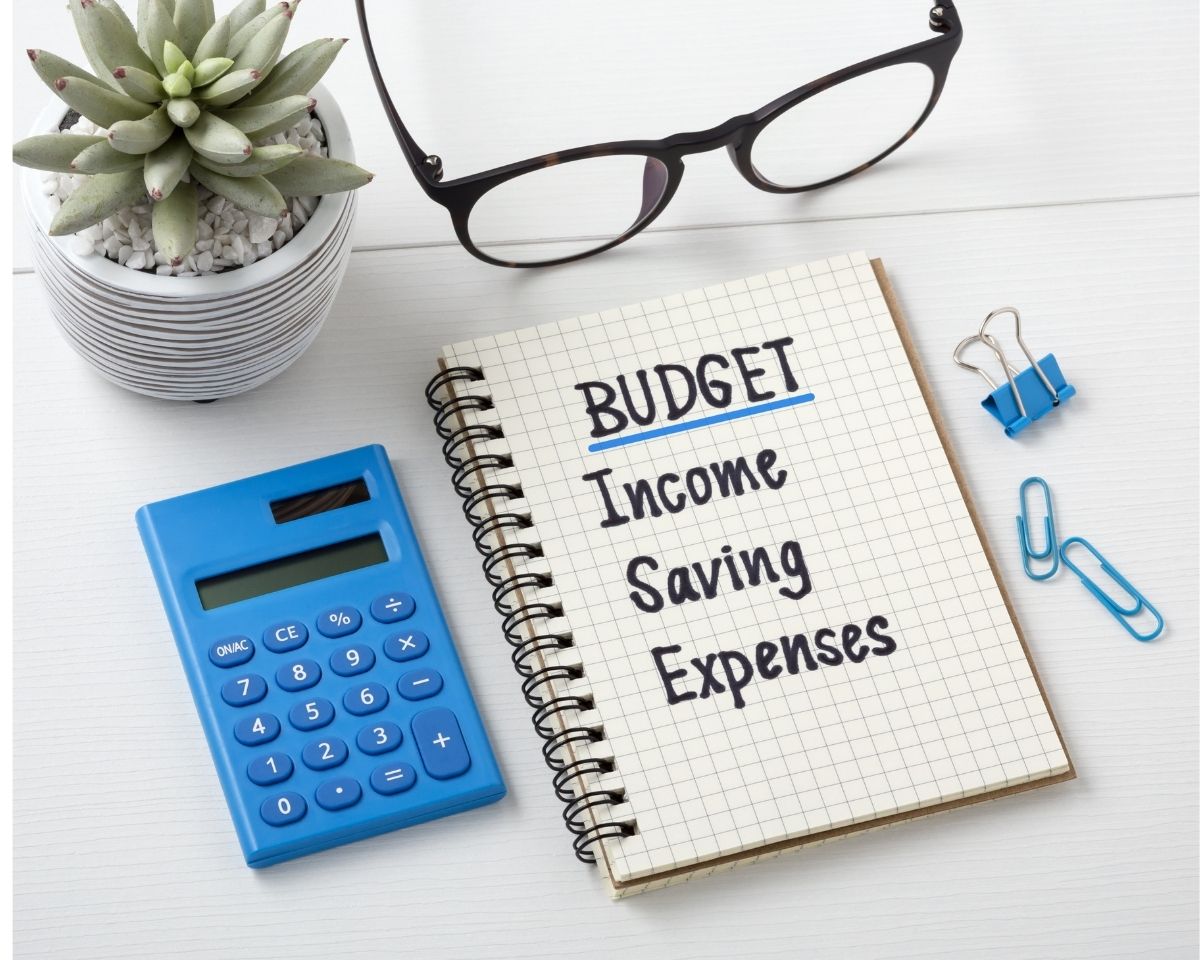Ready to take control of your finances and start saving? Look no further! In this article, we will guide you through 10 easy steps to help you create a sustainable budget. By following these straightforward tips, you will learn how to effectively manage your money, reduce unnecessary expenses, and ultimately achieve your financial goals. Whether you’re saving for a dream vacation, a down payment on a house, or simply want to better track your spending, these steps will set you on the path to success. So let’s get started and take the first step towards financial freedom!
Step 1: Set Financial Goals
Define your short-term and long-term financial goals
Setting clear financial goals is the first step towards creating a sustainable budget. It’s important to define both short-term goals, which can be achieved within a year, and long-term goals that may take several years or more to accomplish. Short-term goals may include paying off credit card debt or saving for a vacation, while long-term goals could involve buying a home or planning for retirement.
Determine your priorities and values
When setting financial goals, it’s essential to consider your priorities and values. What matters most to you? Is it financial stability, early retirement, or perhaps supporting your children’s education? Understanding your priorities will help guide your budgeting decisions and ensure that your spending aligns with what you value most.
Consider your current financial situation
Before creating a budget, it’s crucial to evaluate your current financial situation. Take stock of your income, expenses, debts, and assets. This assessment will give you a clear picture of where you stand financially and help you determine the steps needed to achieve your goals.
Step 2: Assess Income and Expenses
Calculate your total income
To create an effective budget, you need to know how much money is coming in each month. Calculate your total income by considering all sources, including your salary, bonuses, investment income, or any side hustle. This will serve as the starting point for allocating funds towards various expenses and goals.
Track and categorize your expenses
To get a comprehensive overview of your spending habits, it’s important to track and categorize your expenses. Keep a record of all your expenditures, whether big or small, over the course of a month. Categorizing your expenses will help you identify areas where you may be overspending or where you can make adjustments.
Identify areas where you can cut costs
Analyzing your expenses will enable you to identify areas where you can cut costs and make your budget more sustainable. Look for recurring expenses that can be reduced or eliminated, such as subscription services or dining out. By making smart adjustments, you can allocate more funds towards your financial goals and achieve them sooner.

Step 3: Analyze Spending Patterns
Review your expense categories
To create a sustainable budget, it’s important to review your expense categories in detail. Take a closer look at each category and evaluate the percentage of your income that is allocated to it. This analysis will help you determine if any categories are taking up a disproportionate amount of your budget. Adjustments can then be made to ensure a more balanced allocation of funds.
Identify unnecessary or frivolous expenses
While reviewing your expense categories, pay close attention to any unnecessary or frivolous expenses. These are often the culprits behind budget leaks and can hinder your progress towards financial goals. By identifying and eliminating these expenses, you can free up more money to put towards savings or debt repayment.
Look for opportunities to reduce discretionary spending
Discretionary spending refers to expenses that are not essential for daily living and can be easily reduced or eliminated. Take a close look at your discretionary spending habits, such as entertainment, hobbies, or shopping. Consider where you can make adjustments, like finding more affordable alternatives or reducing the frequency of these expenses. By cutting back on discretionary spending, you can make your budget more sustainable in the long run.
Step 4: Create a Budget Template
Choose a budgeting method that works for you
Creating a budget template is vital for organizing your finances effectively. There are various budgeting methods to choose from, such as the envelope system, zero-based budgeting, or digital budgeting apps. Select a method that resonates with your personal preferences and financial goals. Experiment with different methods until you find one that suits your lifestyle.
Set budget categories and subcategories
Once you’ve chosen a budgeting method, it’s time to set your budget categories and subcategories. Common categories include housing, transportation, groceries, utilities, debt repayment, savings, and entertainment. Break down each category into detailed subcategories to ensure that all aspects of your spending are accounted for.
Allocate funds based on your financial goals
With your budget categories and subcategories established, it’s time to allocate funds based on your financial goals. Determine the percentage of your income that should be allocated to each category, ensuring that your goals are achievable. For example, allocate a higher percentage towards debt repayment if your objective is to become debt-free, or allocate more towards savings for a down payment if buying a home is a priority.

Step 5: Allocate Funds for Essential Expenses
Prioritize essential expenses like housing, utilities, and groceries
When creating a sustainable budget, prioritizing essential expenses is crucial. These include items like housing, utilities, groceries, transportation, and healthcare. Allocate a sufficient portion of your income towards these expenses to ensure that your basic needs are met.
Ensure that these expenses fit within your income
While it’s crucial to prioritize essential expenses, it’s equally important to ensure that they fit within your income. Your essential expenses should not exceed the amount of money you bring in each month. If they do, consider making adjustments such as downsizing your living space, exploring cheaper utility providers, or finding affordable alternatives for groceries.
Consider ways to reduce costs in these areas
Even when prioritizing essential expenses, it’s possible to find ways to reduce costs. Look for opportunities to save on housing, such as downsizing or refinancing your mortgage. Explore options for lowering utility bills, such as energy-efficient appliances or adjusting heating and cooling habits. When it comes to groceries, consider meal planning and shopping sales to maximize savings. Small adjustments in these areas can make a significant impact on your budget over time.
Step 6: Allocate Funds for Debt Repayment
Determine how much you can allocate towards debt repayment
Debt repayment should be a priority when creating a sustainable budget. Determine how much you can comfortably allocate towards repaying your debts each month. Consider your minimum payments as well as any extra funds you can save to accelerate the process. The sooner you eliminate high-interest debts, the more money you’ll have available for other financial goals.
Focus on high-interest debts first
When allocating funds for debt repayment, it’s crucial to prioritize high-interest debts. These debts, such as credit card balances or personal loans with high-interest rates, can cost you more in the long run. By focusing on paying off these debts first, you’ll save money on interest and free up more funds for savings or other financial goals.
Consider debt consolidation or refinancing options
If you have multiple debts with high-interest rates, consider debt consolidation or refinancing options. These strategies can help simplify your debt repayment by combining multiple debts into one monthly payment with a lower interest rate. While consolidation or refinancing may not be suitable for everyone, they can provide significant relief for certain financial situations.

Step 7: Allocate Funds for Savings
Set aside a portion of your income for savings
Saving should be an integral part of any sustainable budget. It’s essential to set aside a portion of your income for savings, even if you’re focused on debt repayment. Start with an achievable savings goal, such as saving 10% of your income each month, and gradually increase it over time. Automating your savings can make it easier to build a consistent savings habit.
Establish an emergency fund
Creating an emergency fund is a crucial step towards financial security. Aim to save three to six months’ worth of living expenses in case of unexpected circumstances like job loss or medical emergencies. Having an emergency fund provides a safety net and peace of mind, ensuring that you won’t have to rely on credit cards or loans during challenging times.
Consider other savings goals like retirement or education
In addition to an emergency fund, consider other savings goals such as retirement or education. Start saving for retirement as early as possible, taking advantage of employer-sponsored retirement plans and tax-advantaged accounts like IRAs or 401(k)s. If you have children, explore savings plans specifically designed for education expenses, such as 529 plans. By saving for the future, you’ll be better prepared for financial milestones and unexpected events.
Step 8: Track and Monitor Your Budget
Use budgeting tools or apps for tracking expenses
To ensure that your budget remains sustainable, it’s essential to track your expenses regularly. Utilize budgeting tools or apps to automate this process and make it easier to monitor your spending. Apps like Mint, YNAB (You Need a Budget), or Personal Capital can help you stay on top of your finances and provide insights on areas where you can improve.
Regularly review your progress and make adjustments
Reviewing your budget regularly is crucial to its long-term success. Set aside time each month to assess your progress, compare your actual spending to your budget, and make any necessary adjustments. Life circumstances and financial goals may change, so it’s important to modify your budget accordingly to ensure that it remains sustainable and aligned with your objectives.
Stay accountable and motivated to stick to your budget
Sticking to a budget requires commitment and discipline. Find strategies that help you stay accountable and motivated. Share your budgeting journey with a trusted friend or family member who can provide support and encouragement. Celebrate milestones along the way to keep yourself motivated and remind yourself of the progress you’ve made.

Step 9: Seek Professional Advice
Consult with a financial advisor
If you have complex financial situations or need guidance on specific aspects of your budget, consider consulting with a financial advisor. A qualified professional can provide personalized advice tailored to your unique circumstances, helping you make informed decisions and optimize your financial strategy.
Get assistance with complex financial situations
Certain financial situations may require specialized expertise. Whether it’s tax planning, estate planning, or investment advice, seeking assistance from professionals in these areas can ensure that you’re making the best choices for your financial future. Experts can help you navigate complex regulations, optimize your tax strategies, and make well-informed investment decisions.
Receive guidance on investment or retirement planning
If you’re unsure about investment strategies or need guidance on retirement planning, seek the assistance of a qualified professional. Choosing the right investment vehicles, understanding risk tolerance, and preparing for retirement are complex tasks that require expertise. Financial advisors or retirement planners can help you analyze your options and create a plan that aligns with your goals.
Step 10: Review and Adjust Regularly
Regularly review your budget and financial goals
A sustainable budget requires regular review and adjustment. Set aside time each quarter or at least once a year to evaluate your budget and financial goals. Assess whether your goals are still relevant, review your progress, and make any necessary changes to your budget allocation. Regular reviews ensure that your budget remains aligned with your evolving needs and aspirations.
Adjust your budget as circumstances change
Life is unpredictable, and circumstances can change at any time. If you experience significant life events such as marriage, having children, or a career change, adjust your budget accordingly. Revisit your financial goals and make adjustments as needed to ensure that your budget remains sustainable and continues to support your changing lifestyle.
Celebrate milestones and recognize progress
Creating a sustainable budget is a journey, and it’s important to celebrate milestones and recognize your progress along the way. Whether it’s paying off a significant debt, reaching a savings goal, or achieving financial stability, acknowledge your achievements and reward yourself. Celebrating milestones helps maintain motivation and reinforces the positive financial habits you’ve developed.
Creating a sustainable budget is a valuable skill that can lead to financial stability and peace of mind. By following these ten steps and making adjustments as needed, you’ll be well on your way to achieving your financial goals and building a solid foundation for the future. Remember, consistency and discipline are key, and with time, your sustainable budget will become second nature.


